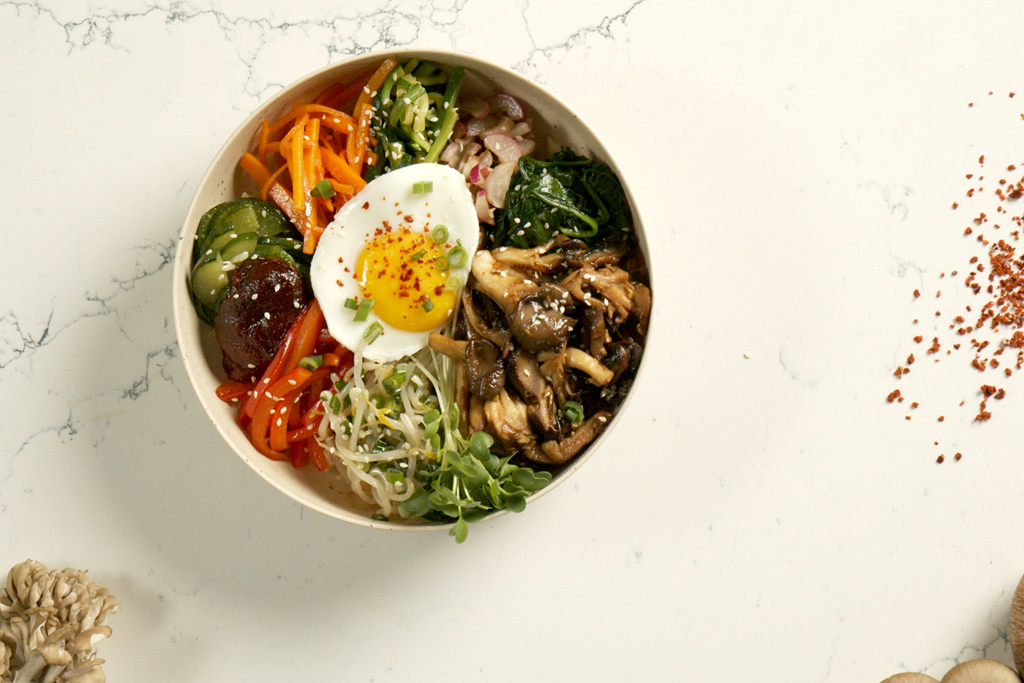
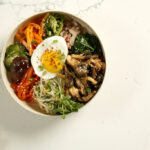
Grilled Mushroom Bibimbap
- Yield: Serves 6
Description
This recipe was produced by The Culinary Institute of America as an industry service, thanks to the support of the Mushroom Council.
Bibimbap is one of the best known Korean dishes. The name of the dish means “mixed cooked rice” and features crisped rice topped with colorful seasoned vegetables, Korean marinated beef, an egg, and a dollop of gochujang. In this vegetarian version, we make grilled mushroom bibimbap! This bibimbap is as beautiful as it is delicious, and is packed with flavor, color and texture.
Ingredients
Quick Pickled Vegetables
- 6 oz. carrot, cut into matchsticks
- 6 oz. zucchini, thinly sliced into half moons
- 3 oz. red radish, thinly sliced into half moons
- 6 oz. red bell pepper, cut into matchsticks
- 6 oz. cucumber, cut into matchsticks
- 2 tsp. salt
Bibimbap
- 1 lb. mung bean sprouts
- 4 Tbsp. sesame oil, divided
- ½ tsp. salt
- 2 Tbsp. garlic, finely minced, divided
- 6 ea. green onion, sliced
- 12 oz. spinach (with tender stems)
- 24 oz. assorted mushrooms, such as cremini, shiitake, maitake, or oyster mushrooms
- 2 oz. soy sauce
- 1 ½ oz. honey
- 3 cups short grain brown rice, uncooked
To Garnish
- 4–6 Tbsp. gochujang
- 4–6 ea. egg yolks or sunny side up egg
- toasted sesame seeds,as needed
- gochugaru, as needed
Instructions
- For the Quick Pickled Vegetables: Place the carrots in a small bowl, sprinkle with ½ teaspoon of salt, and set aside.
- Place the zucchini and radish together in a small bowl, sprinkle with ½ teaspoon of salt, and set aside.
- Place the bell pepper in a small bowl, sprinkle with ½ teaspoon of salt, and set aside.
- Place the cucumber in a small bowl, sprinkle with ½ teaspoon of salt, and set aside.
- Allow the pickles to marinate for about 20 -30 minutes, then squeeze all the water out of the carrots, zucchini, radish, and cucumber quick pickles, keeping them separate.
- For the Bean Sprouts: Place the bean sprouts in a medium saucepan, and cover with water and a lid. Bring to a boil without lifting the lid, and cook for 10 minutes. Drain and toss with a little sesame oil, ½ teaspoon of salt, 1 teaspoon garlic, and ½ the green onions. Set aside.
- For the Spinach: Heat a medium saucepan. Wash the spinach 3 times, then immediately remove from the water to the pan without drying. Add 1 teaspoon of garlic and place a lid on the pot. After 2 minutes, stir the spinach and continue to cook for another 2 minutes or until all the spinach is wilted. Drain and allow to cool. Roughly chop and season with a teaspoon of sesame oil and salt to taste. Set aside.
- Heat a non-stick pan and saute the bell peppers. Add a teaspoon of sesame oil and the remaining green onions. Wipe the pan out and then saute all the salted vegetables separately, in a teaspoon of sesame oil for each vegetable, wiping the pan between each use, and placing the wilted veggies back in separate small bowls, ready for assembly. Season with salt to taste.
- Depending on the size of the assorted mushrooms, slice, leave whole, or cut the mushrooms in half so they are all roughly the same size.
- Heat a large saute pan. Add the canola oil and cook the mushrooms in batches until deep golden brown and thoroughly cooked.
- While the mushrooms are cooking, mix together the soy sauce, honey, remaining garlic, and remaining sesame oil.
- When the mushrooms are cooked, pour the sauce over the mushrooms and bring to a boil. Cook until the mushrooms are well coated with a shiny glaze, being careful not to burn the sauce.
- Assemble the Bibimbap in a traditional dolsot (Korean earthenware pot) coating the bottom with approximately 2 teaspoons of sesame oil before dividing the rice between the pots. (Alternatively , without the traditional dolsot, this can just be presented with hot rice in individual serving bowls)
- Top the rice with the vegetables arranged in small piles on top.
- If using the dolsot, place the pot on a burner over a medium high heat. Wait until you can hear the rice sizzling and forming the nurungji or traditional crust on the bottom.
- Finish the bibimbap with gochujang, a sprinkle of gochugaru and roasted sesame seeds.
- Top with a raw egg yolk or a sunny side up egg.
If you like this, try these:
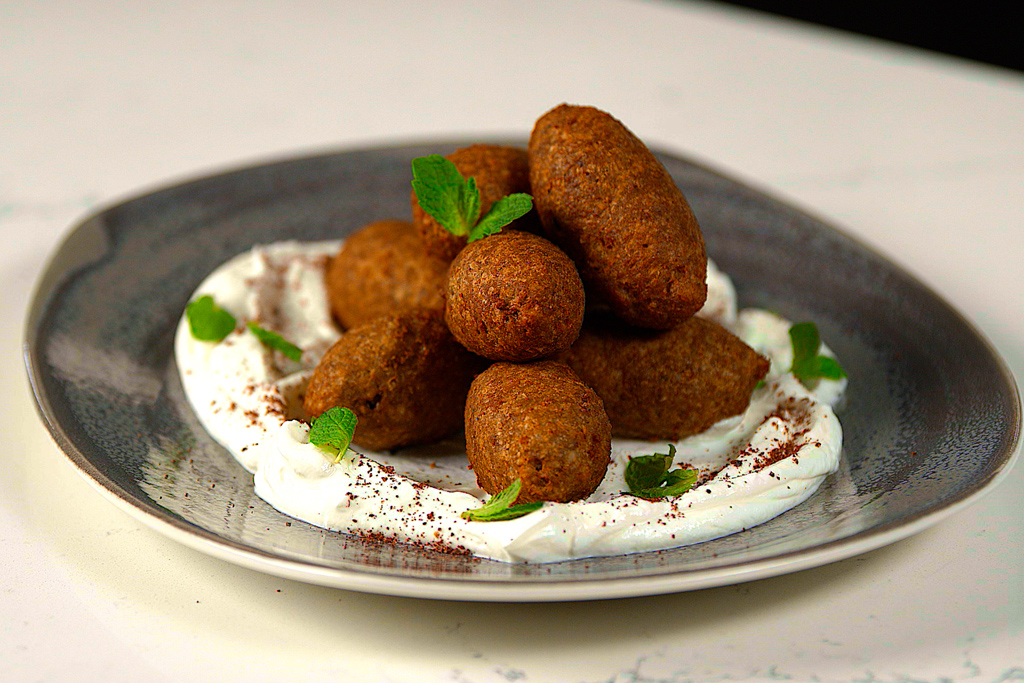
Mushroom Kibbeh
This recipe was produced by The Culinary Institute of America as an industry service, thanks to the support of the Mushroom Council.
View Recipe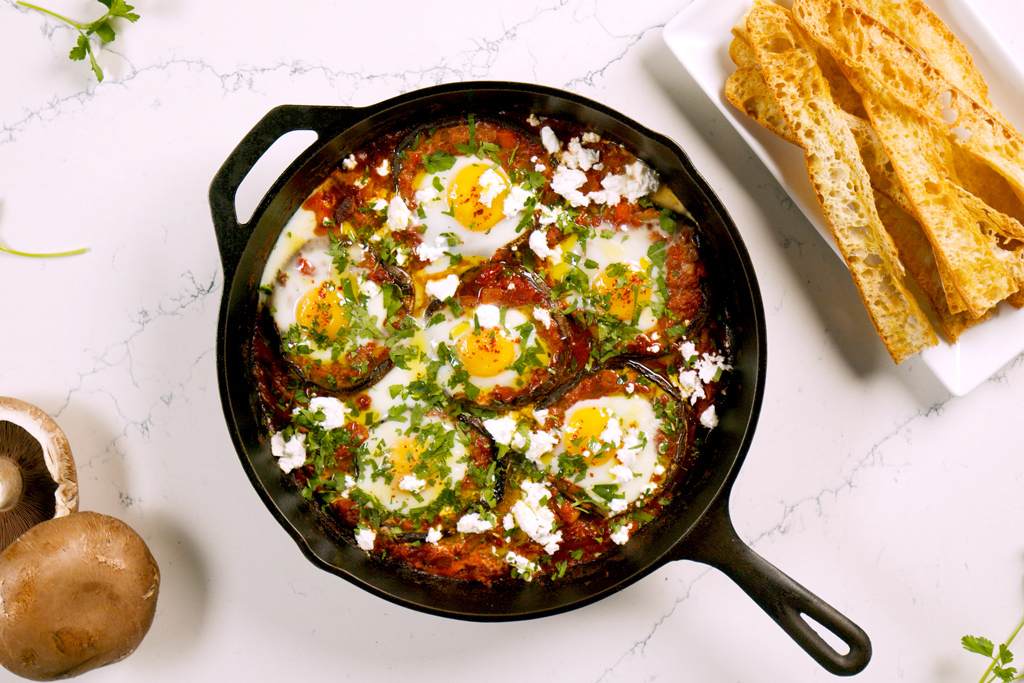
Portabella Mushroom Shakshuka
This recipe was produced by The Culinary Institute of America as an industry service, thanks to the support of the Mushroom Council.
View Recipe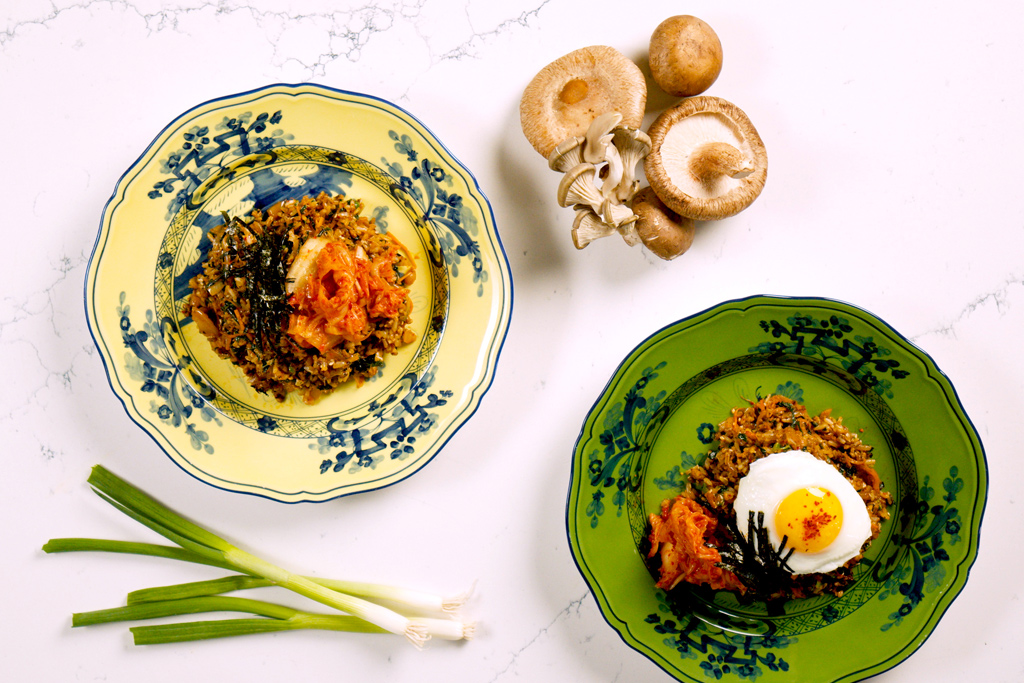
Mushroom and Kimchi Fried Rice
This recipe was produced by The Culinary Institute of America as an industry service, thanks to the support of the Mushroom Council.
View Recipe
